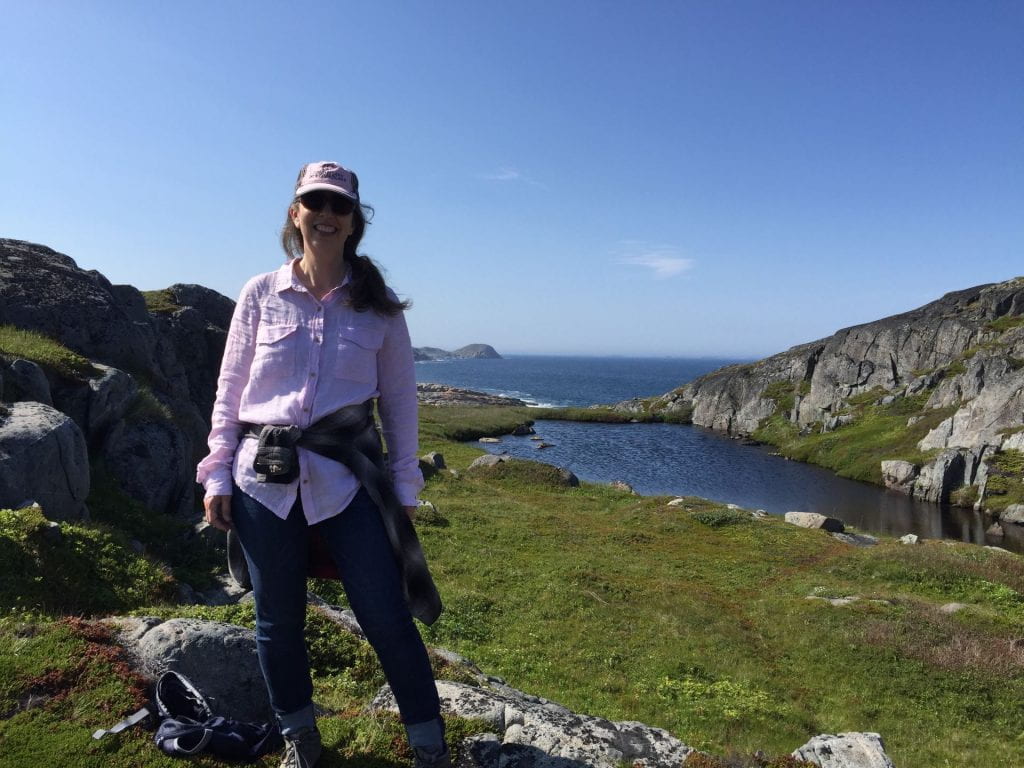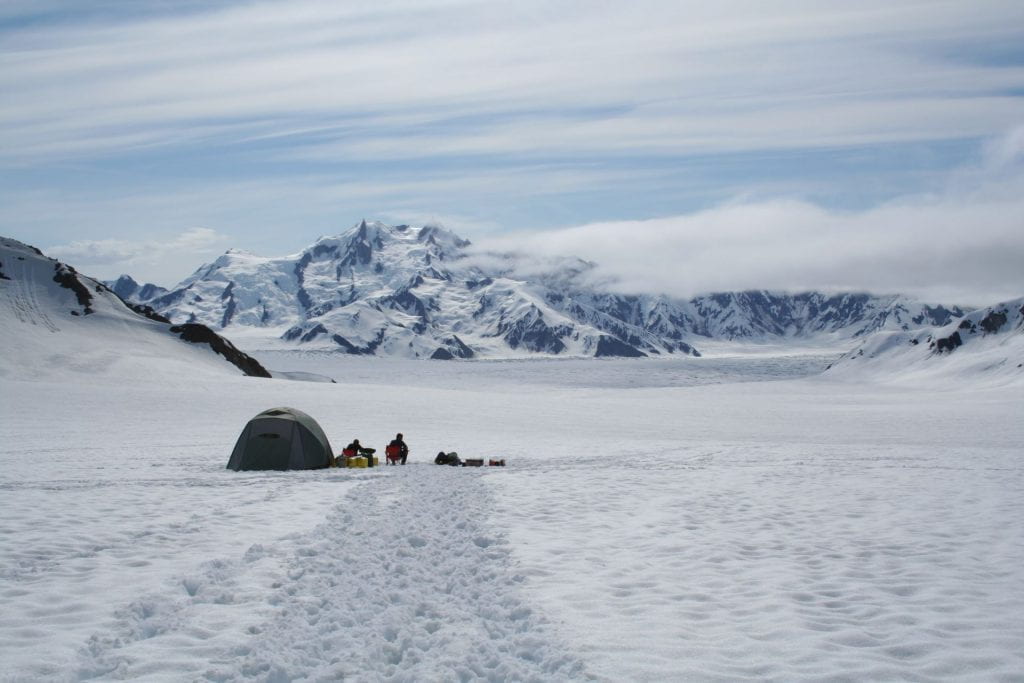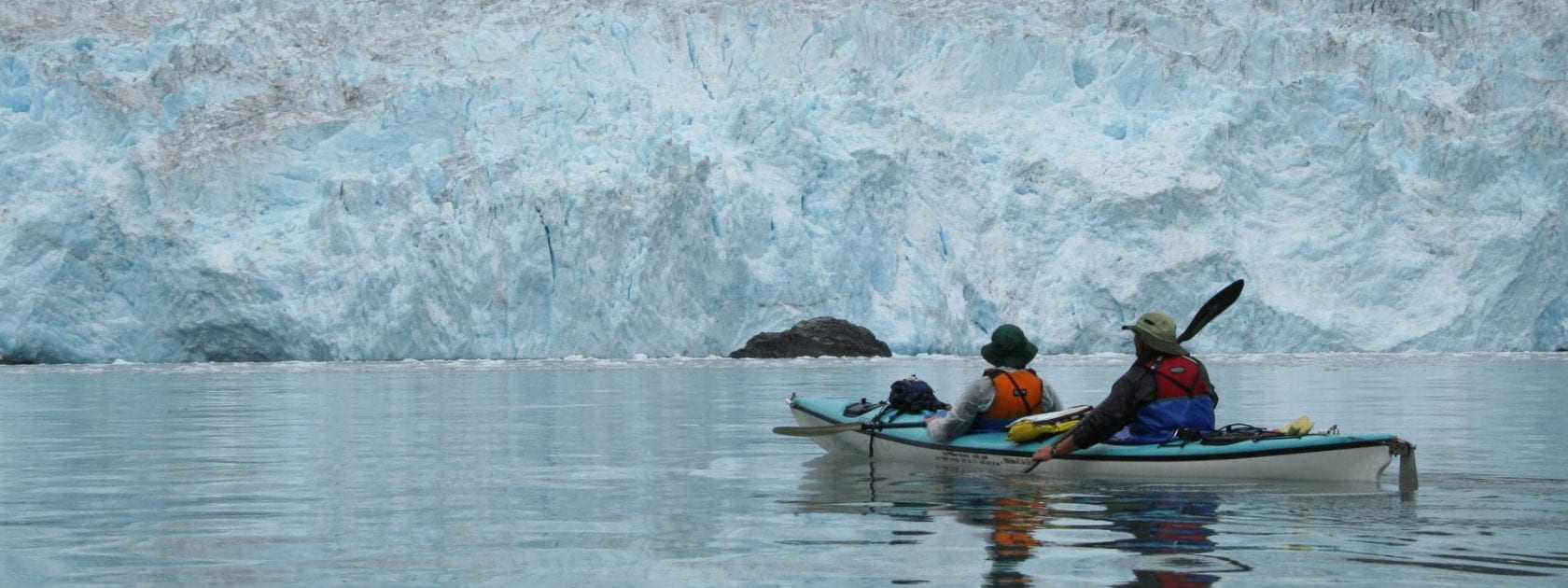Emmanuelle Arnaud: This is my first time talking to a novelist! I often spend what free time I have reading fiction, but the way our organizations are set up don’t always encourage or facilitate those cross-disciplinary dialogues. I very much enjoyed your novel, Blaze Island. Along with the story line and the characters, I loved the way you captured the wind and the landscape. The wind almost becomes another character, which is a feeling I got whenever I’ve been in Newfoundland. The novel was great vehicle to talk about various aspects of climate change—the science, the dilemmas we are faced with in our response to it, the challenges in communicating the science to the public, and in making changes that impact people and their way of living in very concrete ways. Since I’m a geologist, and a former history major, I often thought of time as I was reading. Your book reminded me of events (campaigns against prominent scientists, focus on statistical rigour of the data and possible solutions like injection of particles into the atmosphere) that maybe took place in the 2000s. It conveys the broad aspects of climate change and what to do about it, which haven’t changed much since that time. As a writer, how do you deal with time? How do you deal with the fact that climate change science is always shifting and evolving? Since writing a book takes a significant amount of time, some aspects of research are bound to be out of step with the current topics once the book is published. I suppose it is not too different from the dilemma of publishing one’s scientific results and knowing that the next study might alter some conclusions.


Left: First page of a scientific article published by Emmanuelle Arnaud in the Journal Sedimentary Geology. Right: Book cover of Blaze Island, new novel by Catherine Bush (Blaze Island cover art: Christine Koch).
Catherine Bush: First of all, thank you, Emmanuelle, for your wonderful and detailed response to Blaze Island. I’m glad you loved all the wind! I’ve taken a look at your papers, which of course are fascinating, technical, and quite different in scope. Regarding time in the novel, Blaze Island is set in a proximate world, that is, it takes from the real world and creates a fictional one. The first page, the Prologue, gives a date tag: almost a decade into the new millennium. The main action of the novel occurs approximately ten/ten plus years later when Miranda is nineteen. The events that result in Milan Wells’s flight from academia (being set upon by climate change deniers, the email hacking, accusations of fraud, research investigated) are very much based on what happened to actual climate scientists in the US and UK at the end of 2009, leading up to that December’s Copenhagen climate summit. The climate engineering in the novel draws on the work of David Keith and others— real research that was taking place in the mid- to late-2010s. But it doesn’t strictly adhere to actual experiments. The novel evokes an alternate now (at the time of its writing and revising, 2019—which was the future when I began writing in 2013!). The present kept changing as I wrote and is, of course, always receding into the past: this is the challenge of writing pressed up against swiftly altering human and climatic phenomena. Adhering too closely to actual events can risk making the fictional world seem dated, especially in a world changing as rapidly and convulsively as ours is, with new extreme weather events every few weeks and now a pandemic that goes on radically shifting our social landscapes. I wanted my fictional world to be rooted in actual science but have an aura of the fantastical. The novel also draws on The Tempest, a Shakespearean play filled with magic. I’m engaging in a kind of thought experiment. I wanted to try displacing the human story from the centre of the narrative, amplifying other elements of the biosphere (the nonhuman, the air, the weather) while considering how a group of contemporary humans—a desperate and grieving climate scientist, his dutiful daughter, the young man who loves her, an narcissistic airline magnate, his rebellious son, others—contend with change and peril, particularly climate peril in the form of worsening storms and melting Arctic ice, which will alter the lives of all of us on Earth, a great melt that is, indeed, ongoing.
EA: Yes, the present and climate keeps changing. In terms of the science, I’m not sure what type of climate research we should do next. Ideally, we ought to do more cross-disciplinary research that tries to incorporate the various components of complex systems, which includes subdisciplines of science but also the social science side of climate change science. We should ask: How do we change our ways? How do we implement the recommendations that are buried in scientific reports? How do we convey or convince the public and policy makers of the urgency of the matter? What are the very tangible costs of not doing anything? There are tons of remote sensing data collected in the past few decades now that may help to capture the rate of change and in part help to convey the very significant changes to the cryosphere in particular—I’m thinking of the great time lapse videos from the work of James Balog in Chasing Ice for example. The research I did before working on groundwater-related projects was focused on reconstructing the climate of the past. Some of it was based on rocks in Alaska that would help us to sort out the onset of the last major glaciation about 5 million years ago, and some of it was based on rocks preserved in Norway and Scotland that would help us sort out the possibility of a global glaciation about 650 million years ago. This work is like the work that Milan Wells did with the ice core but looking at cores or outcrops of rocks instead and using their characteristics to infer what the environmental conditions were like in those time periods. What motivates me to do this kind of research is that I’m very keen on understanding environments but with a historical lens. I like reconstructing what the past looked like based on what I see in the rocks and I like to get a sense of the historical context of environmental and climatic change with a very long view of history. Are these extreme events really extreme if you look at the whole of Earth’s history? And if so, what other periods were like this? What happened back then? And can this help us with dealing with what is happening now and what is to come?
CB: It’s fascinating to me to attempt to think in geological time, spans of millions and hundreds of millions of years. Perhaps to you it seems less unusual but most people, I wager, are not in the habit of doing this. In Blaze Island I try to give a sense of geological time interwoven with human time, especially when Milan describes the island and its geology to his daughter. On Fogo Island, where I spent time over eight summers researching my novel, the Shorefast Foundation runs an annual program, Geologists at the Edge, which brings a geologist to the island, which has unique geological features. One year I asked the resident geologist, Peter Croal, to walk me along a stretch of shore, detailing its geological history. I took copious notes and could only use a fraction of them in the novel.

I’d love to hear you talk more about your own conceptions of time. For instance: How do you walk around in the midst of our current climate crisis with a simultaneous awareness of such deep time? How does that shift how you think about what it means to be human and our own current predicament? How might it help us prepare for what is to come as you wonder, above? (I recall talking to a young geologist on the ferry to Fogo Island; we were discussing plastic waste, which would decompose on a 500-year time scale. A long time to me, not so much geologically.) Does a geological time frame make you more fatalistic about the fate of humanity? How does it compel you to reframe ideas of human survival? Do rocks seem more real than humans?
EA: I walk around thinking the earth has seen these types of climatic shifts before but the difference is perhaps how we have since built up a very complex world with lots of infrastructure, connectivity between places, and people making it harder to adapt to the rapid change in climate. I am currently reading Braiding Sweetgrass by Robin Wall Kimmerer and a passage struck me; it read to the effect of how if a species treats the natural world with respect and reciprocity, then that species is more likely to survive than a species or culture that destroys it. This was a stark reminder that the choices we are making may have serious consequences for our survival. Still, I wouldn’t say I am fatalistic about humanity. There are a lot researchers working on the science of climate change and a lot of artists working on communication about climate change; hopefully the two working together will help us adapt. It’s going to get very hard, especially in specific regions, but I am hopeful. To answer your final question, to me, rocks are not more real than humans. They are more like a foundation, grounded and solid, a constant, with stories to tell (though in geological time, rocks can be very dynamic and you can make them pliable under high temperatures and pressures!)

CB: In Blaze Island I wanted to think about the climate crisis through the lens of melting ice. Milan Wells studies the paleoarcheology of snow and ice before sounding the alarm about warming temperatures, drawing on these ice records. My sister, who is a climate-science advisor, introduced me to a colleague, Chris Derksen, who has spent time on field campaigns in the north studying snow and ice and who provided me with vivid experiential details about camping in sub-zero temperatures and Arctic flat light conditions, as well as an incredibly useful overview of cryospheric field work and how a scientific team functions. On Blaze Island itself, icebergs, pieces of ancient ice that have broken from the Greenland ice sheet, float past outside Miranda and Milan’s back door and, one year, are marooned by the thousands in a bay off the island. Milan and his daughter drink shards of iceberg ice, swallowing tiny particles of ten-thousand-year-old air and microbes as they do so. Emmanuelle, I’d love to hear from you more about what it feels like to be on a glacier. What do you see, hear, smell, touch? How exactly do you gather your data? What tools do you use? When working with sediments and considering their deformations, and the fluctuations of the ice itself, do you imagine the glacier and what the world might have been like when it was present, its physical scale and relationship to human scale?
EA: It feels amazing to be on a glacier. The landscape is not quite like any other I find. You see the way the ice or snow melts more when there is any kind of dust or debris on the ice; you get a sense of scale for all those features that were left behind in places like Ontario—a sense of the ice that made those shapes in the landscape. If you are close to the edge of an ice sheet that terminates in water, you can hear great cracking sounds as the ice adjust and melts. The water that melts is super cold which makes it hard to wash your face in the morning. If you stand around waiting to get picked up by a helicopter, you realize your feet are getting cold standing on the ice. The way I gather my data is most often very basic: I need a notebook, pencil, measuring tape, compass, and a camera. The year we were researching in Alaska, we had a portable drill to collect small samples from the rocks. I love the low-tech nature of this job. The trick is to have really heightened observational skills and the language to describe what you see. I do think of the scale of the ice when I look at the sediments and landforms that have been left behind. It is fun to look at the slope at the south end of Guelph and think there was a huge wall of ice there at one point.
CB: I also recall reading an article recently about what signs an advanced, technological civilization would leave in the geological record, which asked, playfully, if there might even have been previous advanced civilizations on Earth and if so how would we know? The so-called Silurian hypothesis. When you think of us, now, as a species in time, what traces do you imagine us leaving geologically?
EA: There is a book by Alan Weisman called The World without Us and it suggests that we will leave behind plastics, bronze sculptures, and man-made molecules. But if I think of trace fossils—which is a whole subdiscipline of paleontology which looks at the traces various behaviours of organisms leave behind—I think of the imprints we have left on the ground. Not small-scale stuff like our footprints, but more large-scale projects like what Edward Burtynsky documents. Large open pit mines, for example, might survive long into the future. I suspect we might not leave a lot behind, though, and perhaps those large open pit mines would be re-possessed (so-to-speak) in deep time.
CB: How, with the experience that you have as a scientist who has studied glaciers, do you respond to recent news like the collapse of last fully intact ice shelf in the Canadian arctic? Or the recent news from UK scientists that the Earth has lost 28 trillion tons of ice in less than 30 years largely from global heating driven by ever-rising human-caused greenhouse gas emissions? In writing Blaze Island, I’m compelled by the existential dilemma of being a climate scientist: how do you hold your grief, your anger, your despair? How do you find hope? And how do you parent while navigating these fraught psychic landscapes alongside actual altering weather patterns? What is it like to be the child of a grieving climate scientist? I also wanted to dramatize through narrative a different way of connecting to the larger world, decentring the human story while amplifying other elements: wind, land, rock, flora, animal presences. And so I’d like to ask you: What does it feel like as a scientist to detail data but leave subjective experience out of your scientific accounts? Do you feel grief at our global ice loss and how do you deal with it? How do scientific practices shape what you believe knowledge is and needs to be at this moment in time?
EA: This makes me very sad. There is a scene in the movie Chasing Ice where they are recording the largest ice calving event ever recorded and James Balog describes it as “a magical, miraculous, horrible scary thing.” It gives me goose bumps and chokes me up every time. It is awful to think that future generations may not be able to experience glaciers as we can today. I just sit with it, I guess, and try to do my part to minimize our footprint. My geological perspective might give me a sense that these shifts have happened before without humans and that this is just part of what happens over time but in the same breath it also shows the scope and scale of the changes that have been brought on by our activities on earth. That is unsettling and impressive.
CB: Thanks, Emmanuelle, for these incredible, thoughtful answers that really allowed me into a geologist’s mind and world-view. I see glaciers newly through you and have my sense of time re-arranged a little just reading your words.
For more on Emmanuelle Arnaud’s work, please visit her website: https://earnaud9.wixsite.com/earnaud/research-projects. For more on Catherine Bush’s work, please visit her website: https://catherinebush.com


Left: Catherine Bush (photo credit: Arden Wray). Right: Emmanuelle Arnaud (photo credit: University of Guelph).
Banner photo credit: Emmanuelle Arnaud.



